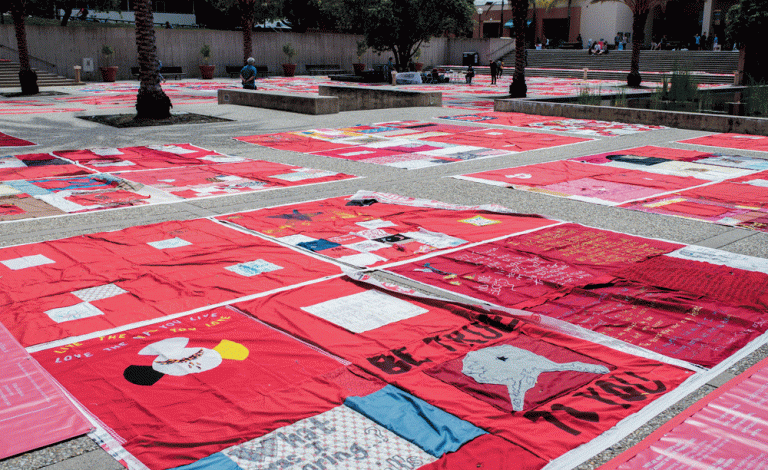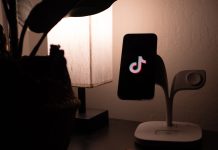
Morgan Bubman
*Trigger warning: sexual assault*
“NOT ALONE.”
The words caught my eye walking to Storke Tower, as did the giant patches of red fabric sitting on the plaza. I had known the Monument Quilt event was taking place, but I hadn’t realized just how impressive it would be. The set up on Storke Plaza contained a well-planned layout of the squares, a quilt square making table, and a Counseling and Psychology Services booth.
The Monument Quilt is a nationally spread, publicly-made quilt created by and for survivors of sexual assault. On their website, the quilt is defined as “an on-going collection of stories from survivors of rape and abuse.” Each red quilt square contains a story of survival and healing. Once the quilt is fully made, those giant patches spelling “NOT ALONE” on Storke Plaza will eventually take up a full mile on the National Mall in Washington D.C.
There were a handful of people on the plaza when I arrived, and the lack of a large crowd put my mind at ease. Extending across the top stair at Storke Tower, a message on red paper gave a trigger warning to the attendees, while also noting that is perfectly okay to be emotional while taking part in the Monument Quilt experience.
As I walked through the giant conglomeration of stories, I noted the differences in individual experiences. While some patches told stories of generational racial oppression, others touched on the importance of consent and respect, as well as the difficulties involved with healing. My hands trembled, my breathing slowed, and my eyes watered as I made my way through this sea of red squares.
As a survivor, reading the language used by other survivors about sexual assault was nothing short of an emotional experience. While some used the quilt to express positive messages about healing and solidarity, others wrote heartbreaking messages about their lived traumas and mental health downfalls. Everyone experiences trauma differently, and this quilt gives the public a chance to see that.
When I decided to create a quilt square, my mind began to run a million miles a minute; with so many ideas, I had trouble deciding what statement would be the most personally impactful and cathartic. I found myself worrying that whatever I wrote could be misinterpreted to represent all survivors, instead of referring to myself alone. Eventually, I added to the quilt, “You made that decision for us both. I may be hurting now, but I won’t hurt forever.”
Fearing misrepresentation is common amongst survivors of sexual assault and abuse, as individual experiences are instead believed to be collective, which can lead to a hoard of accusations that serve to blame the survivor.
Public healing is essential in addressing the rampancy of sexual assault. Sexual assault is often silenced through fear, whether that be fear of not being believed, of the assailant, of judgment, or of the stigma surrounding victimhood itself. Through making such a public statement on the frequency and normalization of sexual assault, the creators of the Monument Quilt are shattering the silence often imposed upon survivors.
Sexual assault occurs all around us, and while statistics may show the numerical occurrence of sexual violence, only lived experiences can turn these statistics into reality. Speaking out through events such as the Monument Quilt are hugely important in the healing process for survivors, and can be equally essential in teaching the public about the commonality and variety in these violent acts. Speak up and speak out, as no one can always know what their peers are going through.










